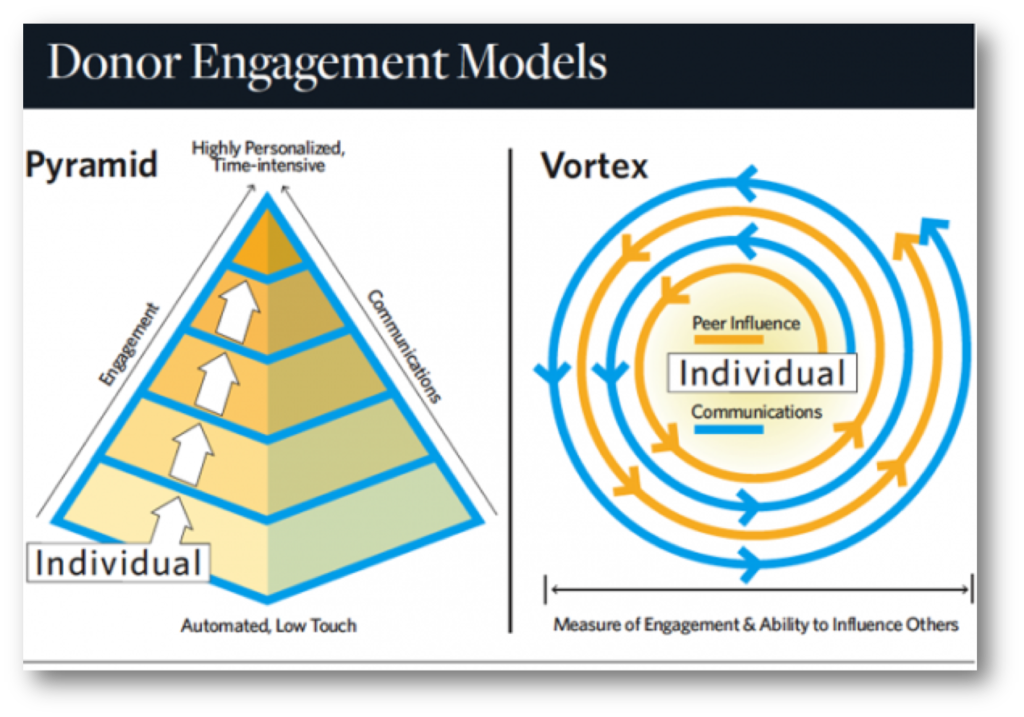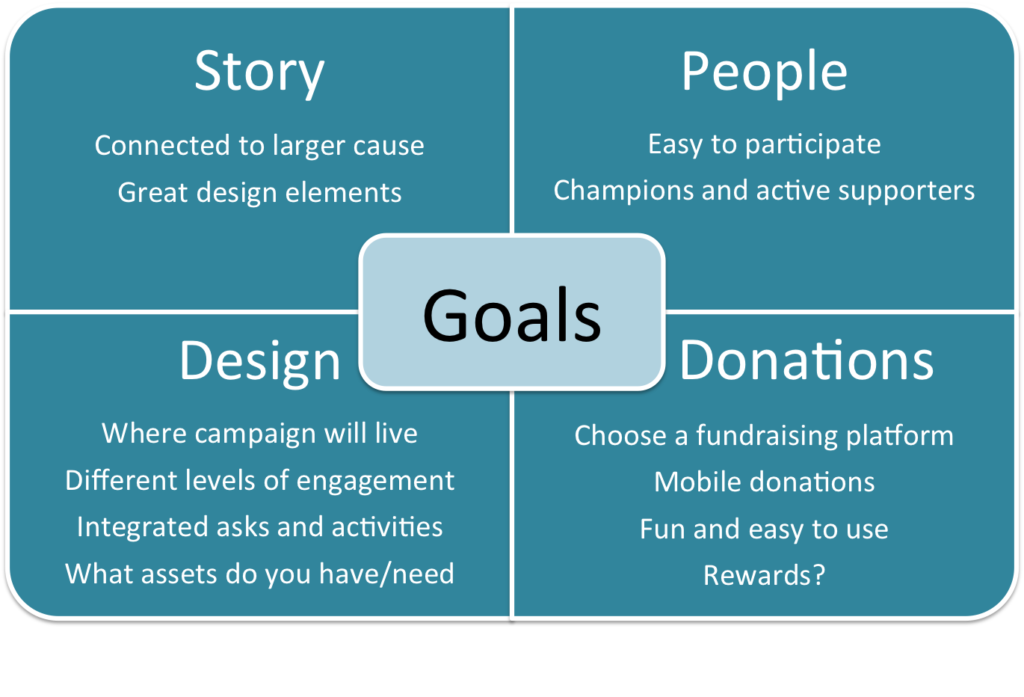In April, I had the pleasure of presenting a workshop about designing a GivingTuesday nonprofit fundraising campaign to the AFP chapter of Mahoning-Shenango County, Ohio. Although GivingTuesday isn’t until November, April is a perfect “start date” in so many ways: enough time to plan, acquire the assets and skills necessary for campaign success, and cultivate the stakeholders who will make GivingTuesday successful for them. This was a delightful group of eager participants, and they were fully engaged!
I divided the workshop into three segments:
- Understanding the effect of social media and technology on donor behavior
- Campaign planning elements for a successful #GivingTuesday campaign
- Hands-on #GivingTuesday campaign planning
Understanding the Effect of Social Media on Donor Behavior
One of the key models of donor cultivation, the Donor Pyramid, was challenged in a 2013 SSIR article by Julie Dixon and Denise Keyes. In The Permanent Disruption of Social Media, Dixon and Keyes look at the impact of social media on the traditional donor-engagement model. In the Donor Vortex model, Dixon and Keyes suggest that “there are no discrete steps upward or downward or levels to progress, but rather a continuous flow of communication and engagement that begets further communication and engagement.”

This model encourages organizations to think about the value of small contributions by donors who have large social networks. Non-financial contributions in the form of social influence, volunteering, connecting others with your cause are also highly valued in this model. (Example: the ALS Ice Bucket Challenge.)
How to use this to prepare for GivingTuesday, today?
Think about different avenues for contributing during GivingTuesday that aren’t exclusively financial, different types of donors who have varying degrees of social network influence, and using social media ties to drive GivingTuesday actions.
Understanding the Role of Technology on Donor Behavior
Technology has given donors more influence than ever, with access to information about organizations, who supports them, and the impact organizations are making. It’s donors in charge now, and specific organizations are relevant only to the extent that they are transparent, accessible, and communicative.
This is supported by three simple statistics:
- 62% of Gen Y (millennials) would donate using a mobile device (Blackbaud Report, 2013)
- 65% of Americans do their social networking on mobile devices
- 17% of all 2015 GivingTuesday donations were made online
How to use this to prepare for GivingTuesday, today?
Make sure your organization has a successful mobile donation form (check out some effective mobile donation forms highlighted by everyaction), your organization accepts donations seamlessly online, and your website is mobile optimized or responsive in design.
Campaign Planning for a Successful GivingTuesday

A compelling story tied to a larger cause. Your people, engaged. Thoughtful campaign design. Simple and easy-to-use donation experience. These campaign elements should foremost support your strategic goals. The presentation (embedded above) further explains these elements. During the workshop, we focused on the Story element in detail.
Ultimately, attendees paired off again to begin designing the #GivingTuesday campaign of their dreams. Ideas included a collaborative fundraising campaign with other organizations, and creating a campaign to test how a younger audience would respond to an established organization’s appeal.
If you’ve never participated in GivingTuesday, this is the right time to begin thinking about it. Peruse the many resources offered through the GivingTuesday website. Feel free to use the worksheet in the slide deck as a guide for determining what assets you need, and what you already have. There is also a case study from when I worked at the National Brain Tumor Society, as well as a post-GivingTuesday thank-you video from Camp Tevya within the embedded presentation. They may spur ideas for your organization, too.
